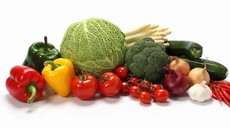 When producers decide to cultivate a species, they must also decide which variety to focus on, usually the most suitable for their needs and crop conditions. The National register of agricultural plant species lists the varieties suitable for the environmental conditions in Italy, which have shown specific characteristics during scrupulous tests carried out over various years by test centers. Each country part of the EU has its own register, gathered (since 1972) in the European Common Catalogue of varieties of agricultural plant species.
When producers decide to cultivate a species, they must also decide which variety to focus on, usually the most suitable for their needs and crop conditions. The National register of agricultural plant species lists the varieties suitable for the environmental conditions in Italy, which have shown specific characteristics during scrupulous tests carried out over various years by test centers. Each country part of the EU has its own register, gathered (since 1972) in the European Common Catalogue of varieties of agricultural plant species.
Pietro Santamaria and Angelo Signore, respectively professor and researcher at the Department of Agricultural, Environmental and Territorial Studies of the University of Bari, examined the data of the over 20,000 vegetable varieties and compared them with the edition of ten years earlier. There were many surprises.
Italy and Spain, the leading vegetable producer countries in Europe (over 40% of the total), are not the ones with the most varieties registered, as Holland holds this position despite its contribution to the total European vegetable production of only 5.4%.
Vegetable production percentages in Europe. Click here to enlarge.
The two scholars assessed how vegetable varieties changed within the European Union over the past 10 years, as well as the type of propagation and seeds used (hybrid, free pollination, agamic propagation and "conservation" varieties).
The results showed that the country with the most varieties registered is Holland with 8,350 varieties (40.4% of the total). This is due to the entire supply chain, from genetic improvement, retail sales and producer organizations to research bodies.
Distribution per species and per country of the varieties registered in the European Common Catalogue. Click here to enlarge.
The species with the most varieties are tomatoes (3,675 varieties), bell peppers (2,216) and lettuce (2,114). Over the past ten years, the number of hybrid varieties increased from 9,507 to 11,871, while common varieties increased only from 7,683 to 7,706. Most tomato varieties are F1 hybrids, while lettuce only counts one hybrid despite the over 2,100 total varieties.
Distribution of the main agamic species. Click here to enlarge.
Over the past few years, the EU has paid increasing attention to "conservation varieties" and the ones to use as rootstocks with an eye to environmental sustainability, which goes hand in hand with biodiversity.
The study can be accessed freely (for the next six weeks) on the website of the publishing house.
Bibliography:
Santamaria P., Signore A., 2021. "How has the consistency of the Common catalogue of varieties of vegetable species changed in the last ten years?" Scientia Horticulturae, 277. doi: 10.1016/j.scienta.2020.109805
Contacts:
Prof. Pietro Santamaria
Dr. Angelo Signore
Dipartimento di Scienze Agro-Ambientali e Territoriali
Università degli Studi di Bari Aldo Moro
Via G. Amendola, 165/A
70126 Bari
Email: [email protected] - [email protected]
